Although the participation of women in the Second World War was more active than it may seem a priori , her role was fundamentally in the rear, working in the war industry or holding auxiliary positions in logistics, for example.
Of course, there was no shortage of cases of partisans and guerrillas, but the almost absolute leading role fell to the Soviets, who were in the front line and have left many names for posterity as snipers or piloting planes, for example. The case of Maria Oktiabrskaya is a bit special because she not only drove a tank but she paid for its manufacture with her own money. And all to avenge the death of her husband.
She was called Mariya Vasilievna Garagulia and she was a native of Kiyat, a village in the Taurida Governorate, in Crimea, where she was born in 1905. She was Ukrainian, therefore. Being one of ten siblings, her family could not live precisely in abundance but neither in poverty, since they were kulaks (the highest stratum of the peasantry). This did not free them from being suspected of being resistant to the revolution and they had to submit to the collectivization law that Stalin promulgated in January 1930 to redistribute their land and surplus production.
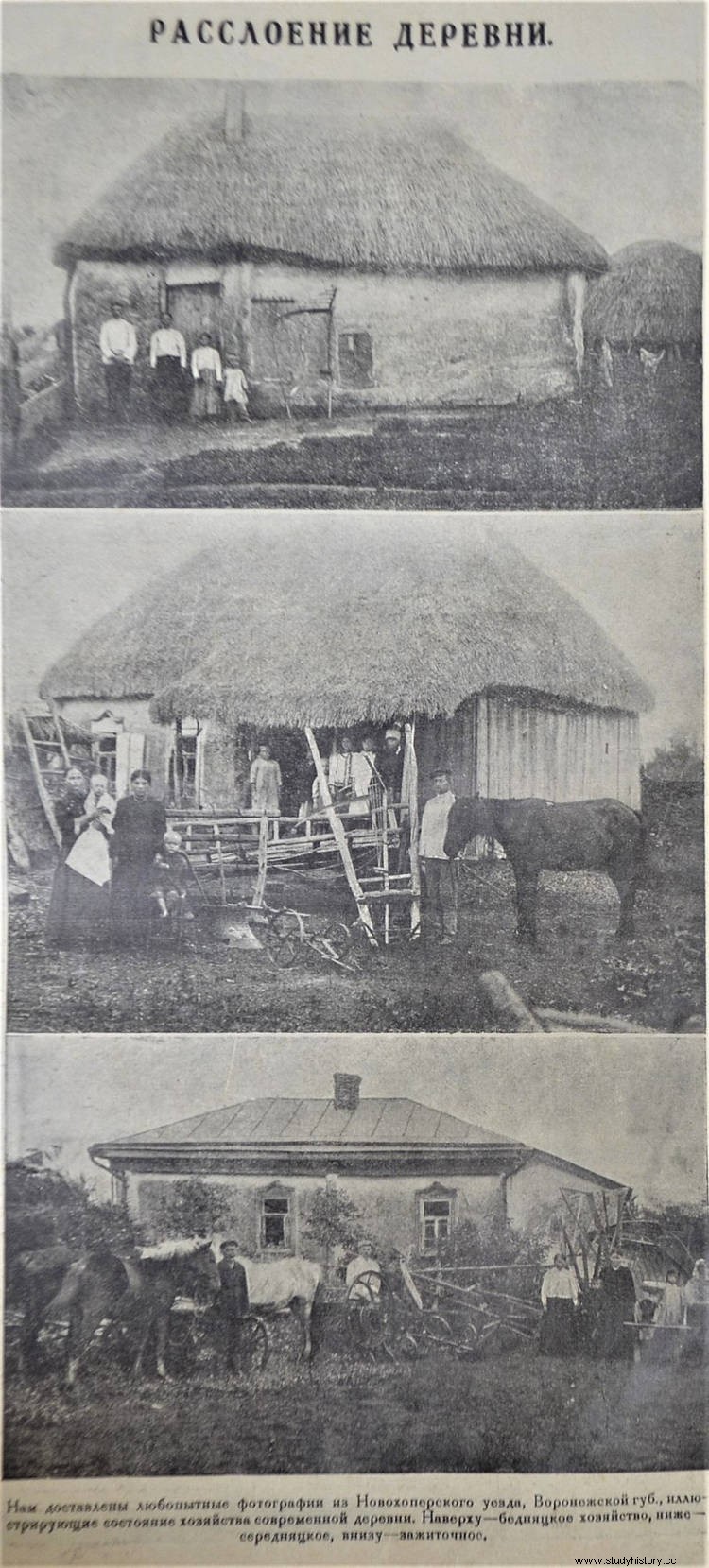
There were kulaks executed and others reinserted in labor colonies; Maria's family had the intermediate fate, which consisted of deportation. They escaped the dreaded Siberia but ended up beyond the Urals, in a town in Sverdlovsk Oblast called Bayanovka. However, she did not have to make that long trip because by then, since 1925, she was already married and living in Simferopol with Ilya Fedotovich Ryadnenko, a cavalry officer, agreeing together to adopt the surname Oktyabrskaya (October, an allusion to the Oktyabrskaya Revolyutsiya or October Revolution).
And it is that since she was young she had left the farm, residing first in Sevastopol and then in Dhzankoy, to pursue disparate trades such as an operator in a canning factory or a telephone operator without ever losing, it seems, a characteristic elegance. Her husband's profession forced her to leave the stable world of work to follow him in the various destinations assigned to him in Crimea. In contact with that barracks world, María learned to drive, to practice first aid and even to use a variety of weapons, at the same time that she joined the corresponding council of military wives that formed each unit:«Marry a military man and you will serve in the army; being the wife of an officer is not only being a proud woman, but also a responsible one» she said she once.
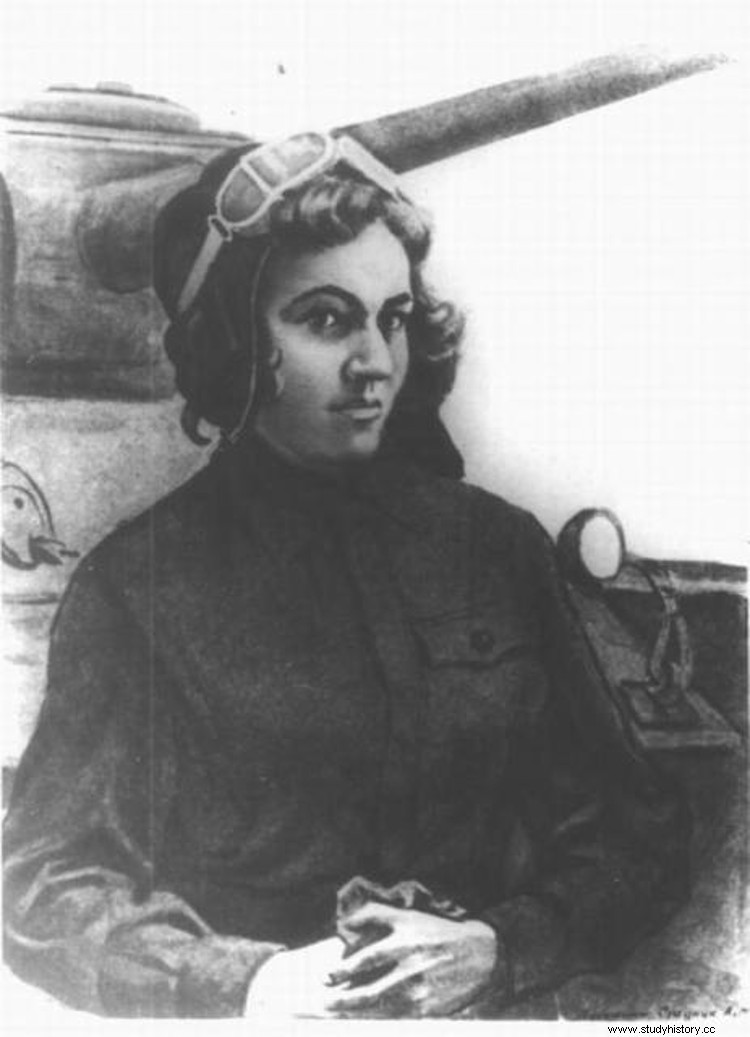
In the summer of 1940 Ilyá was appointed commissar of the 134th Howitzer Regiment, stationed in Chisinau (the capital of Moldova), because at that time the Soviet Union seized Bessarabia (a region that included Moldova and part of Ukraine) from Romania, as well as north of Bucovina (the northeastern part of the Carpathians), taking advantage of the fact that the world's attention was focused on the fall of France. About a year later World War II took a turn with the Operation Barbarossa, the invasion of the USSR by the Germans, starting what the Soviets called the Great Patriotic War.
Maria was evacuated to Tomsk (Siberia) along with her sister, other relatives and the officers' wives. There she resumed her activity as a telephone operator until in 1943, after almost two years without news of her husband, she received a terrible explanation:Ilyá, transferred to the 206th Rifle Division, had been killed by a machine gun blast while leading a charge near of kyiv, in August 1941. Suddenly, life changed radically for that woman and she would be in charge of sharpening said transformation.
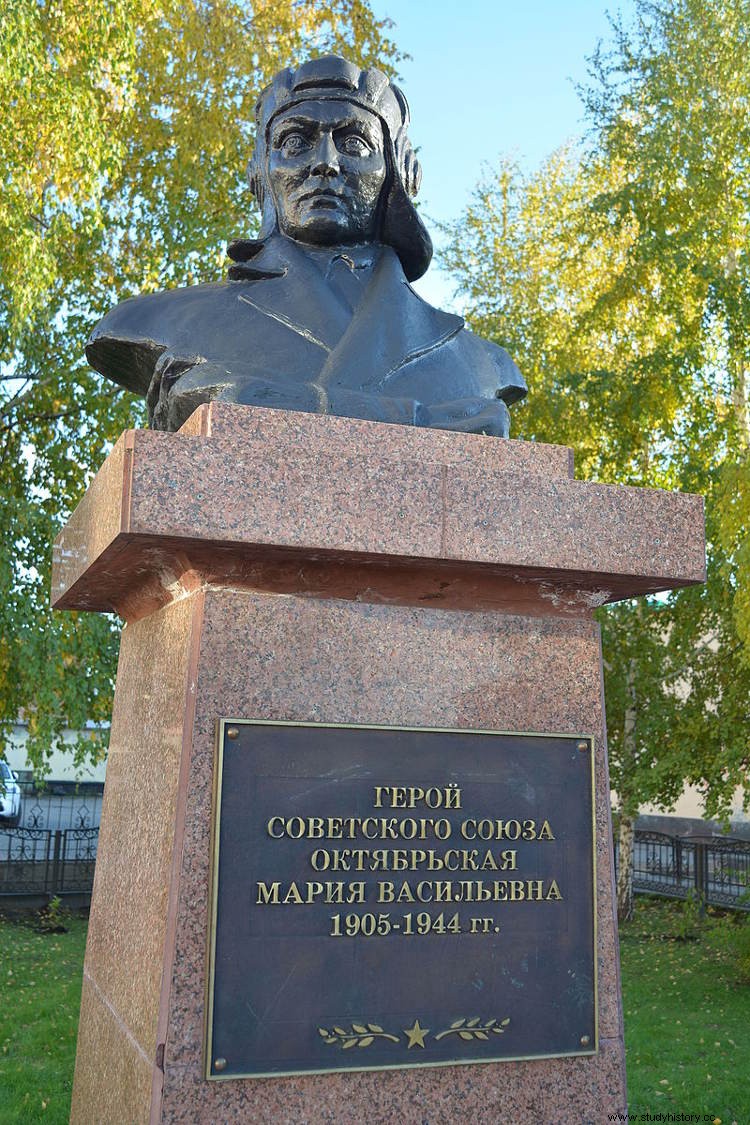
The first thing she tried was to volunteer to go to the front, but she was rejected for two overwhelming reasons:on the one hand, she was already thirty-eight years old; on the other, she suffered from tuberculosis. She did not resign herself and had an idea as unheard of as she was daring. In a personal interpretation of the government's fundraising campaign, Maria and her sister sold all her property and worked piecework for several months as embroiderers to raise fifty thousand rubles to pay for a car. of combat; a more than remarkable figure considering that the average salary was two hundred rubles.
It sounds a bit strange today, but at that time it was not uncommon in many countries for private individuals to pay for weapons to donate to the army, especially in times of war. In this case it was something as rare as a T-34, the medium-sized tank that since 1940 was replacing the T-26 light tanks (whose performance in the Spanish Civil War and the Winter War against Finland had been very questioned). The engineer Mijaíl Koshkin equipped it with more armor and a 76 mm gun (later increased to 85).
Maria wrote a telegram to Stalin expressing her desire to avenge her husband by killing "fascist dogs" , explaining how she had already deposited the money and requesting to drive the tank herself, since she knew how to drive and shoot; until, he added, she had obtained the distinction of Voroshilov Shooter (referring to the OSOAVIAJIM, Union of Assistance Societies for Defense and Aviation-Chemical Construction of the USSR, a society founded by Marshal Kliment Voroshilov to provide training to civilians and establish with them a kind of civil reserve force that came to have forty-one battalions).
Stalin responded laconically but affectionately by giving her approval, and so in the spring of 1943 Maria began five months' training as a tank driver at the Omsk Academy. It was a novelty in every way because until then the urgency of the situation forced tank crews to learn on the fly, at the front, after basic training; so she, Maria, was a pioneer in that and in being the first woman in the country to graduate, slightly ahead of the famous Aleksandra Samusenko (to whom we dedicate an article). In October she was already in the front line, in what was known as the Western Front, which for the rest of the belligerents was the Eastern.
In the tank, she had been baptized with the name Compañera de Lucha , María, driver and mechanic, shared the cabin with commander Piotr Chebotkó, gunner Guennádiy Yaskó and radio operator Mijaíl Galkin. They were attached to the 2nd Battalion of the 26th Brigade of the 2nd Soviet Guards Tank Corps, popularly known as Tatsinsky (for liberating the homonymous Cossack village) and whose most famous intervention would be in the Battle of Kursk. There is no record that the Compañera de Lucha He did participate in it, but he did participate in other combats that took place that fall, to the astonishment of all those who believed that María's presence was only propagandistic.
The first was on October 21, with the tank maneuvering to destroy several machine gun nests and enemy artillery positions. In the midst of a barrage of fire, Maria went outside to make some repairs and although she was reckless - she actually did it disobeying orders - and the car was hit several more times, she earned a promotion to sergeant. A month later they were fighting in Nóvoye Seló, (in Vitebsk Oblast, Belarus) when, during a night battle, the Compañera de Lucha broke the German lines.
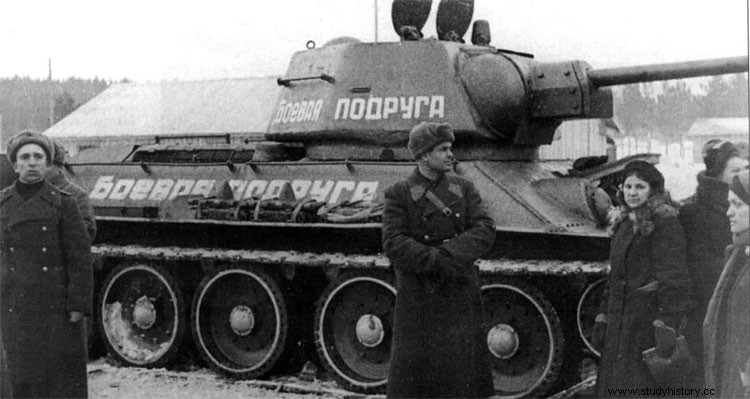
During the action, the tank was hit by an artillery shell, wounding Maria. Given her circumstances, she had to remain in the turret waiting for her evacuation for no less than two days. The battalion officers held her up as an example and her legend began to be forged, which grew in January 1944 when she returned to the front and made her way through the German defenses in the context of the Leningrad-Novgorod Offensive, which aimed to break the site of the city.
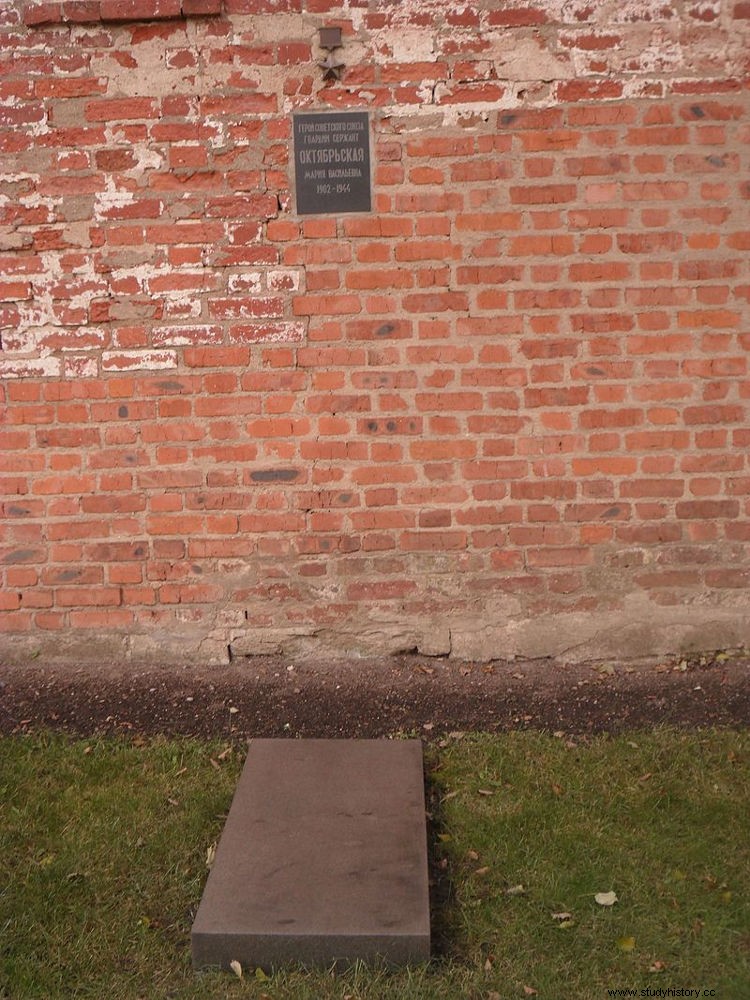
She was operating in the town of Shved, near Vitbesk, where she destroyed a self-propelled howitzer, when in full pandemonium the Compañera de Lucha she was again hit in a drive wheel by a Shell anti-tank. With her classic recklessness, Maria went down again to fix it, resulting in a head injury -particularly affecting one eye- by several splinters from an explosion and lying unconscious. She would no longer wake up.
This time she was quickly transferred to field hospital No. 478 and from there they took her by air to Fastiv, near kyiv, where they discovered that her fragment had penetrated through her eye to her brain and Her injury was very serious. In fact, she fell into a coma and she remained like that for two months while her colleagues and commanders visited her, some of whom were in charge of granting her the decoration she had earned:the First Degree Order of the Great Patriotic War; She would later be given two others, Heroine of the Soviet Union and the Order of Lenin, but posthumously because she died in Smolensk on March 15, 1944, while being transferred to Moscow. She there she lies in a place called, very properly, Memory of the Heroes.
What happened, meanwhile, to the Compañera de Lucha ? Well, her name was already frequent on Soviet tanks but since then it has been passed, as a legacy, from one car to another as they were destroyed; it is known that the fourth reached the Prussian city of Könisberg, now Russian Kaliningrad. Moreover, at the end of the war the Guards Tank Regiment adopted the tradition of always calling one of its units that way. A nice tribute.
